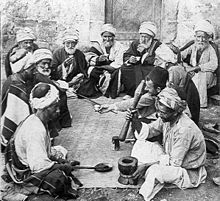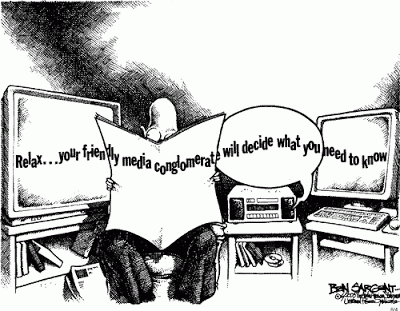This is an interview on a tv show between a journalist and a
graphic designer about a new container for a product.
Fred: Journalist
Mike: graphic designer
This is a transcription from the interview in the tv show
Fred: Journalist
Mike: graphic designer
This is a transcription from the interview in the tv show
- Fred: So! here we are! welcome to another episode of your favorite night news tv show, Fredview. We have here today our very special guest Mike West, who is going to tell us something about his brand new work, this new container for the old chocolate cookies we all know and love. Tell us Mike, which is the advantage on changing the package of the same product?
- Mike: well thanks Fred, hello everybody. Ok, people get bored, interests change, they minds want a little more exploration. We can see this on little children, who always want to test new things and interact with the world. If children last year were interested in the world football cup you want to change your cookies to look like footballs, for example, in order to make them look more attractive. You make an study on what are children interested now, and we saw that the entries on zoos are blowing up. We think this may be caused by some tv cartoon about animals that is growing popular and children are asking their parents to take them to the zoo. Also, this year we will have the Olympics, so, I've created a package where we can see animals making pole vaulting, running, and making different sports.
- Fred: You said children wanted to test different things. Why would you put the same things they are surrounded by then? I mean, if children want different things, and they have the Olympics and like animals, I would have made a package that doesn't contain that, so they can test something new.
- Mike: Right, you can't control what children will like, I'm speaking about long term periods when referring to interest changes, a year maybe, in which children will be attracted to different things. Now they are attracted by that, so we adapt our mediums to let that attraction benefit us.
- Fred: What is exactly "that medium" you talk about?
- Mike: Medium is the instrument of communication that lets you inform and tell something to the public. <[English A: Language and Literature course companion book page 158]> You need to understand how mass communication work. Look, who sends the message? The communicator, and that message says something. That message needs to be inside a medium, a channel, a way in which the receiver audience can get to it to cause an effect. I this case, I am the communicator, the message it's that this product is fun and can make children feel comfortable buying and consuming this as it "likes" the same they do. The channel is the sight, the pictures. You will find no word in the container that says something about that the package likes the same you do, but children will understand that by the pictures. The receiver, the audience, is of course the children, and the effect you want to cause in them is to feel identified by the container, to understand the message.
- Fred: I know that in mass communication you always want to have feedback in order to upgrade your chances of having a better experience with your public. How do you recieve this feedback when creating a snak container?
- Mike: Well, yes, I totally agree with you, feedback is essential when producing advertisement and mass communication elements. We do have a webpage with a forum and a comment section, but as it's to be expected, no children is going to access to the webpage of a cookie to say they liked it. The most relevant feedback we have is just the fact that every time we change the physical look of a product, our sales increase in a 12-14%. This shows us that they really like it and we have here a positive response and that they feel comfortable with it.
- Fred: apart from just including characters they like, is there anything else you can do to make children feel more close with the product?
- Mike: There is were rhetorical strategies come in scene. You have to make the difference between products that want to inform from products that want to persuade. I need to have clear the fact that I want to persuade. I need to pay close attention to elements like register, genre and style a consumer likes. While they are many ways of convincing us through language acts like tone, color, sentence length, etc, is the ability to combine this things what is able to persuade the public at the end.
- Fred: I... well... I need to admit that I didn't understand your explanation. Can you give us an example?
- Mike: There are things you can combine and strategies you can use. The most common is the "give me three" technique. When saying three things, people get attracted. In the US, the declaration of liberty was "Life, liberty, and the pursuit of happiness". Julius Caesar used to say "Veni, Vedi, Vici". That's the reason why you see in our product an elephant saying "Take, eat, do!" This means: take a cookie, eat the cookie, and now you will have the ability to do all the things the animals are making in the picture. Though, none of this is being said by words. That is an example of a rhetorical strategy.
- Fred: any other examples?
- Mike: when you have fat free products, you want the container to be green and white, ad have leaves and different elements from nature. This way, people buying it will think it is a natural product, when usually, fat free things are even more "toxic" or contain more chemicals than normal products.
- Fred: Ok, thanks you Mike, I wish you luck with your product.
- Mike: Thanks you Fred, goodbye, have a good night.
RATIONALE:
The reason of making a transcription from a tv show is that
the ideas flow much faster and it's easier to understand. Without having the
necessity of making a description of the place (like in a story about the
topic), the words can be used more efficiently and more information is given
and shown with the same amount of words.
I used characteristics that are typical from improvised
dialogues. This can be seen in segments like "Fred: I... well... I need to
admit that I didn't understand your explanation." Fred needs to think a
moment about the answer for a moment. Something similar happens in the next
segment "Mike: Right, you can't control what children will like" That
"right" at the beginning it's a sign that shows a construction of an
answer, a thinking process coming from the thinking of improvising.
Apart from all this, Mike it's a professional graphic
designer, this would explain and give more seriousness about what he is saying
(he knows of what he is talking about because he studied a couple of years at
university, he IS the font of information.
Another aspect of the work, is that the register of the
language that is being used is an informal, cult register. This is, again,
caused by the improvisation used on a formal occasion. This is shown in
sentences like "Now they are attracted by that, so we adapt our mediums to
let that attraction benefit us." The use of the world "that" is
lack of specific language, caused again by the improvisation and dialog
creating in the moment. At the same time though, the same sentence uses the
word "medium", showing the background knowledge of the Mike.




